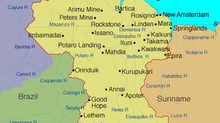Indoor Residual Spraying: evaluating novel methods for Aedes aegypti control
The proliferation of the Aedes aegypti mosquito globally in urban areas as well as the evolving resistance to current insecticides is prompting researchers to refine and improve on current vector control methods.

Indoor Residual Spraying (IRS) has been an effective vector control strategy, but to overcome some of the limits to IRS scalability in dense urban environments such as application time and indoor accessibility, researchers from Mexico, the United States and Australia have been investigating the efficacy of modified IRS methods.
Targeted IRS (TIRS) was trialled in 9 experimental houses located in Merida, Mexico. This involved spraying walls only below 1.5 meters as well as under furniture (resting sites) or only onto resting sites (RS-TIRS), and comparing this with classic IRS with insecticide applied to full walls as well under furniture.
Mosquito mortality was measured repeatedly up to six-months after IRS. Two months after the application, the mortality of the mosquitoes was not significantly different between the three IRS methods, and after four months did not significantly differ between classic IRS and TIRS. This study is a positive step in supporting modified IRS in order to reduce application time and insecticide quantity used will not reduce mosquito mortality and will represent a useful and welcome innovation in the vector control strategies for Aedes aegypti.
For more information, please access the following study:
Mike W. Dunbar ,Fabian Correa-Morales,Felipe Dzul-Manzanilla,Anuar Medina-Barreiro,Wilbert Bibiano-Marín,Evaristo Morales-Ríos,José Vadillo-Sánchez,Beatriz López-Monroy,Scott A. Ritchie,Audrey Lenhart,Pablo Manrique-Saide,Gonzalo M. Vazquez-Prokopec
Published: February 28, 2019


























